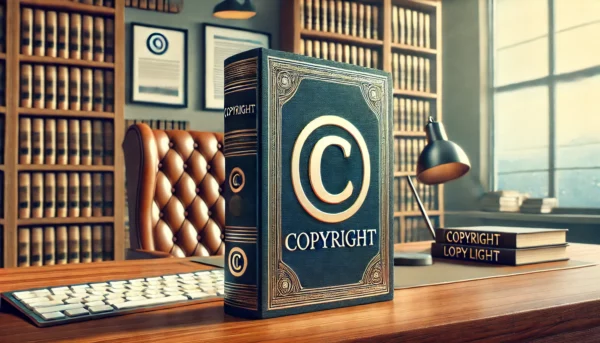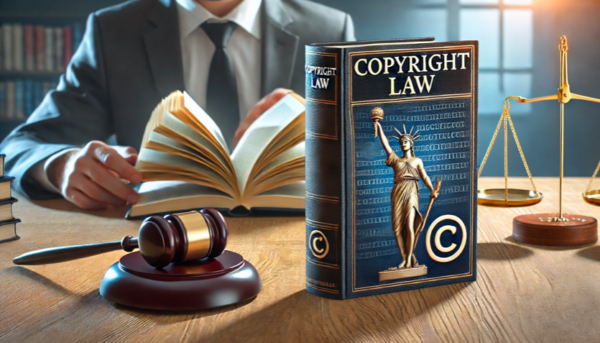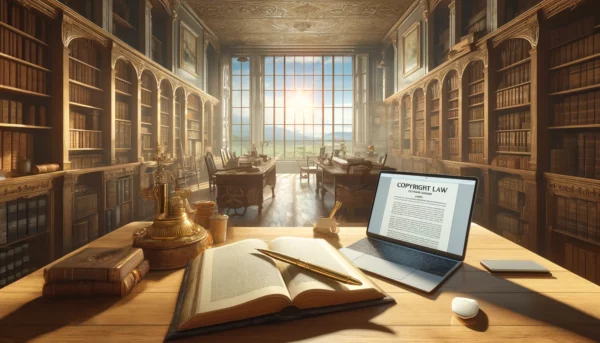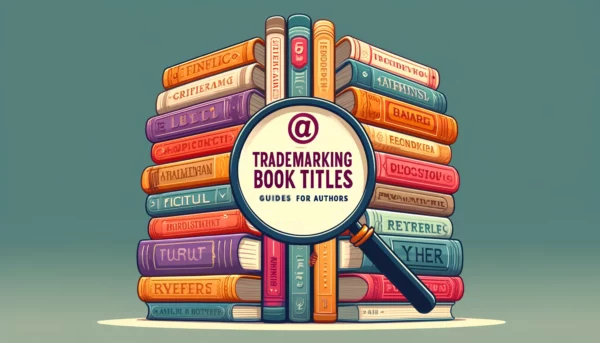Copyright is a legal mechanism that grants the creator of original work exclusive rights to its use and distribution, typically for the creator’s lifetime plus a set number of years. For authors, copyright is an essential tool that protects their written works, such as books, from unauthorized reproduction or distribution. This protection is not just a legal formality; it serves as the economic backbone for authors, enabling them to earn revenue from their creations and control how their works are used.
In today’s digital age, where copying and sharing are as easy as clicking a button, many authors are increasingly concerned about book copyright theft. These fears are not unfounded, as the internet facilitates rapid and sometimes uncontrolled distribution of digital content. However, copyright laws provide a robust framework to combat unauthorized use, offering legal avenues for authors to assert their rights and seek remedies against infringement.
This article will navigate the complexities of copyright law, focusing on its application to books and other literary works. We will explore key terms such as “copyright infringement,” “intellectual property,” and “copyright holder,” while also delving into what actually constitutes copyright protection. Additionally, we will discuss the role of the copyright office, the impact of copyright registrations, and the myths and realities of protecting one’s creative ideas and expressions.
Understanding Copyright Law
Copyright law is a fundamental pillar in the realm of intellectual property that protects the rights of creators by giving them exclusive control over the use and distribution of their original works. This legal concept, rooted in the Constitution of the United States and detailed in Title 17 of the U.S. Code, ensures that authors, artists, musicians, and other creators can profit from their creativity and investment in producing original content. The essential principle of copyright is that it automatically attaches from the moment an original work is fixed in a tangible medium of expression—meaning as soon as the creative work is written, recorded, painted, or otherwise set into a permanent form.
Your Publishing Journey Awaits – Start NowFor authors, copyright law provides a particularly critical protection. Once a work such as a book is written and fixed in a tangible form, such as being typed and saved on a computer, it automatically gains copyright protection. This protection does not require any formal registration; it exists from creation, safeguarding the author’s rights to reproduce, distribute, perform, display, and create derivative works based on the original. Copyright thus offers not only a legal right but also a commercial asset, preventing others from profiting off an author’s efforts without permission.
Understanding Key Terms:
- Copyright Holder: This is the person or entity who legally holds the rights granted by copyright. Initially, this is usually the author or creator of the work.
- Copyright Owner: While similar to the copyright holder, this term can include individuals or entities who have obtained copyright rights from the original holder, perhaps through assignment or inheritance.
- Copyright Registration: Although not required for protection, registering a work with the copyright office provides a public record that is beneficial in the event of a dispute or litigation. Copyright registration enhances the protections available to a rights holder, including the ability to sue for statutory damages.
- Registered Copyright: This refers to a copyright that has been officially registered with the Copyright Office. It gives the copyright owner additional legal benefits, such as statutory damages and attorney fees in successful litigation.
The Role of Copyright Offices:
In the United States, the Copyright Office is part of the Library of Congress and serves as the official registry for copyright. Authors can register their works to establish a public record of the copyright claim. The process involves submitting a completed application form, a non-refundable fee, and a non-returnable copy or copies of the work. The role of the office extends beyond registration; it also provides guidance on copyright policy, law, and registration practices for both new and existing copyright claims.
Internationally, copyright offices function under various national laws but generally perform similar roles to the U.S. Copyright Office. These offices ensure that copyrights are registered and protected in accordance with local laws, which may vary significantly from one country to another.
The Berne Convention:
The international standard for copyright protection is primarily set by the Berne Convention for the Protection of Literary and Artistic Works, which was first adopted in 1886. The Convention now includes a vast majority of the world’s countries, ensuring that works are protected in any of the member countries.
The Berne Convention mandates that all signatory countries provide automatic copyright protection to foreign authors who are nationals of other member states, with protection that is not less than the protection their own nationals enjoy. This means that an author from any member country can expect their work to receive the same level of protection abroad as it does at home, without the need for any additional registration in each country where the copyright protection is sought.
Understanding these elements of copyright law is crucial for any creator. It ensures that they can not only safeguard their works but also navigate international legal landscapes, thus maximizing their work’s potential benefits and maintaining control over its use worldwide.
How Copyright Protection Works
Copyright protection is an integral component of the whole legal system framework that supports creative endeavors. This protection commences automatically from the moment an original work is created and fixed in a tangible form of expression. This means that the mere act of creation, coupled with the manifestation of the idea in something physical—be it written on paper, saved on a computer drive, or captured in a digital recording—triggers copyright protections under the law.
From Creation to Protection:
The initiation of copyright does not depend on any formal actions by the creator; there is no requirement to register literary work or to mark the work with a copyright notice, though these steps provide additional legal benefits. The fundamental requirement is the fixation of the creative expression in a tangible medium. This fixation makes the literary work reproducible and therefore, protected against unauthorized reproduction.
Exclusive Rights Granted by Copyright:
Copyright confers a bundle of exclusive rights to the copyright owner, which includes:
- The Right to Reproduce: The copyright owner has the exclusive right to make copies of the copyrighted work. This is crucial for authors who wish to prevent others from duplicating their books without permission.
- The Right to Distribute: Copyright owners control the distribution of their work. They can sell, lease, or otherwise distribute copies of their works, controlling who receives them and under what conditions.
- The Right to Publicly Perform: This right is particularly relevant for works such as plays, music, and films, allowing copyright holders to control the public performance of their works.
- The Right to Publicly Display: This applies to visual and literary works that can be publicly displayed, including graphics, photographs, and text.
- The Right to Create Derivative Works: Copyright owners can control who makes adaptations of their works, such as turning a novel into a screenplay or a book into a series of illustrations.
These rights allow copyright owners the sole right to manage how their works are used and to seek remuneration for their use. Violation of any of these rights can lead to claims of copyright infringement, where legal remedies and damages may be pursued.
Tangible Form and Its Importance:
The concept of a tangible form is foundational to copyright protection because it makes the work perceptible and thus, protectable. For instance, a novel must be written down or saved in a computer file to be copyrighted. Similarly, a musical composition must be notated or recorded. The requirement of tangible form ensures that the idea itself is not what is protected (as ideas are free to be used by anyone), but the specific, tangible expression of that idea is.
This distinction is crucial in distinguishing between what can infringe copyright and what cannot be protected by copyright. For example, an idea for a novel—such as a story about a young wizard going to a school of magic—is not protectable. However, the specific text of J.K. Rowling’s “Harry Potter” series, because it is expressed in a tangible form, is protected.
Published vs. Unpublished Works:
Copyright protects both published works and unpublished works. A published work is one that has been made available to the public with the consent of the copyright owner, while an unpublished work has not. Copyright protection applies equally to both but being published or unpublished can affect the duration of copyright and the availability of certain legal remedies, such as statutory damages or attorney’s fees in litigation.
Your Publishing Journey Awaits – Start NowUnderstanding how copyright protection works is essential for anyone involved in the creation of original works. The rights it confers are designed to ensure that creators can control the use of their works and are compensated for their efforts. These protections are automatic and robust, provided the work is fixed in a tangible form. For creators, this translates into both peace of mind and the economic incentive to continue producing original content, knowing that their legal rights are secure.
Intellectual Property Basics
Intellectual property (IP) is a legal domain designed to safeguard creations of the mind, offering inventors, authors, artists, and businesses the exclusive rights to utilize and profit from their original works. As a subset of this broader field, copyright plays a crucial role, particularly for those involved in the creation of literary, musical, artistic, and dramatic works, including books and digital content.
The Scope of Intellectual Property:
Intellectual property is divided into several categories, each designed to protect different types of creative labor:
- Copyright: This protects the expression of ideas, such as written works, music, and artwork. Copyright is automatically granted when a work is created and fixed in a tangible medium.
- Patents: These protect inventions and give the inventor exclusive rights to use, sell, or manufacture the invention for a certain period of time. Patents require a detailed application process and are granted for physical inventions and, in some cases, processes or methods.
- Trademarks: These protect symbols, names, and slogans used to identify goods or services. The purpose is to prevent confusion about the origins of goods and services, protecting the brand identity.
- Trade Secrets: This category protects confidential business information that provides a competitive edge, such as recipes or proprietary methods.
Each type of IP protection is tailored to the nature of the work it covers, ensuring that creators and inventors can control how their outputs are used and can derive financial benefits from them.
Role of Intellectual Property Attorneys:
Navigating the complexities of IP law often requires the expertise that intellectual property attorneys provide. These professionals assist in filing for patents, registering trademarks and copyrights, and defending against IP infringements in court. Their role is pivotal not only in securing IP rights but also in advising on the use of IP to maximize commercial advantages and in negotiating licensing agreements.
Understanding Creative Expressions and Original Works:
The cornerstone of IP, especially copyright, is the concept of originality. For a work to be protected, it must originate from the creator and exhibit at least some minimal degree of creativity. It is not the idea itself that is protected but specific creative expression and the unique expression of that idea. For instance, a generic love story cannot be copyrighted, but a narrative that describes specific characters, plots, and settings that the author uniquely devised can be.
Understanding these nuances is essential for anyone involved in creative pursuits. It not only helps in securing rightful protections but also informs how these creators might safely use existing works without infringing on the rights of others. For example, using a copyrighted character without permission can lead to legal consequences, whereas drawing inspiration from generic elements like genres or themes is typically safe.
In conclusion, a solid grasp of intellectual property fundamentals is crucial for anyone looking to navigate the fields of creation and innovation. This knowledge ensures that individuals and businesses can protect their creative investments and explore new opportunities within the legal frameworks designed to support their efforts.
Copyright Infringement: Risks and Realities
Copyright infringement occurs when someone uses a copyrighted work without permission in a manner that violates one or more of the exclusive rights granted to the copyright owner under the law. This infringement can take many forms, depending on the work and the manner in which it is used. Understanding these nuances is crucial for creators to protect their rights and for users to avoid legal pitfalls.
Defining Copyright Infringement:
In simple terms, copyright infringement involves any unauthorized use of a copyrighted work that infringes on the exclusive rights of the copyright holder. These rights include the ability to reproduce, distribute, publicly perform, display, or make derivative works from the original. Infringement can be intentional or accidental, and it occurs regardless of whether the infringer profits financially from the unauthorized use.
Common Examples of Book Copyright Theft:
- Unauthorized Reproductions: Creating copies of books without the permission of the copyright owner, which might involve printing physical copies or creating digital versions.
- Online Sharing: Distributing copies over the Internet without authorization, which includes uploading books to file-sharing sites or emailing PDFs to friends.
- Plagiarism: Using substantial parts of a book’s text without permission, and passing it off as one’s own original work.
- Creating Derivative Works: Such as translating a book or adapting it into a screenplay or other media format without consent.
These practices not only deprive authors of potential earnings but also reduce their control over how their works are presented and perceived.
Impact of Digital Technology on Copyright Infringement:
The advent of digital technology has significantly transformed the landscape of copyright infringement, particularly for written works. The ease with which digital files can be copied and distributed has led to a rise in mass copyright infringement. Digital technology enables:
- Rapid Duplication and Distribution: Digital files can be copied an infinite number of times with no degradation in quality, making it easy to distribute unauthorized copies globally within seconds.
- Ease of Access: The Internet provides an easy means for people to download unauthorized copies of books from various platforms, often with little risk of getting caught.
- Anonymity: Users can often share and download copyrighted material anonymously, complicating enforcement efforts.
- New Forms of Infringement: Technologies such as eBook readers, smartphones, and tablets facilitate new forms of unauthorized use, such as format-shifting or device-shifting that rights holders may not have anticipated.
Mass Copyright Infringement and Digital Works:
In the context of digital works, mass copyright infringement becomes particularly challenging to control. Unauthorized copies of books can appear on multiple websites, in various digital formats, making it nearly impossible to eliminate all instances of infringement. The scale of this problem is often global, as digital files cross borders effortlessly via the Internet.
This widespread unauthorized use has prompted copyright owners to employ more sophisticated technological measures and legal strategies to combat infringement. These include digital rights management (DRM) systems to control how eBooks and many other forms of digital content are used and distributed, and tracking technologies to monitor and trace the unauthorized distribution of digital files.
Responding to Copyright Infringement:
For copyright holders, the response to a copyright infringement case typically involves several steps:
- Issuing Takedown Notices: Under laws such as the Digital Millennium Copyright Act (DMCA) in the U.S., copyright owners can request that websites, ISPs, or hosts remove infringing content.
- Legal Action: If necessary, copyright owners may pursue legal action to seek damages and stop further infringement. This might involve civil lawsuits aimed at obtaining compensation or injunctions against infringers.
- Public Awareness: Educating users about the legal and ethical aspects of copyright use can also be an effective deterrent against infringement.
Understanding the risks and realities of copyright infringement is essential in the digital age, where the boundaries of legal and illegal use are often blurred by new technologies. By staying informed and vigilant, copyright holders can protect their rights, and users can respect the creative efforts of others, fostering a healthier environment for the production and consumption of copyrighted works.
Legal Remedies and Actions
When faced with potential copyright infringement, it is crucial for copyright owners to understand their rights and the legal avenues available to enforce them. This knowledge not only helps in defending their works from unauthorized use but also ensures they can obtain adequate compensation for any infringements that occur.
Your Publishing Journey Awaits – Start NowSteps to Take When Facing Potential Copyright Infringement:
1. Documentation of Infringement: The first step is to gather evidence of the infringement, which includes documenting how, when, and where the copyrighted material was used without permission. This could involve screenshots, URLs, and any other audio recordings or correspondence related to the unauthorized use.
2. Cease and Desist Notice: Often, the next step involves sending a cease and desist letter to the infringer. This formal document notifies the infringer of the copyright violation and demands that they stop the unauthorized activity and remove unauthorized copies of the copyrighted material from circulation.
3. Negotiation and Settlement: In some cases, the issue can be resolved through negotiation, where the copyright owner and the infringer agree on terms for compensation or future fair use of the copyrighted material.
4. Legal Consultation: If the issue is not resolved through direct contact or negotiation, consulting with an intellectual property attorney is advisable. An attorney can provide guidance on the best legal strategy and initiate formal legal actions if necessary.
Protecting Oneself Without Formal Registration:
Although copyright protection exists from the moment a work is created in a tangible form, formal registration provides additional legal benefits, including eligibility for statutory damages and attorney’s fees. The concept of the “poor man’s copyright”—sending oneself a copy of the work in a sealed envelope via registered mail—is a popular myth that does not provide any legal advantage or stand up in court as evidence of ownership.
Legal Actions Available for Copyright Owners:
1. Filing a Lawsuit: If informal resolution methods fail, the copyright owner can file a lawsuit alleging copyright infringement. The lawsuit can seek injunctions to prevent further infringement and monetary damages for losses incurred.
2. Statutory Damages: In jurisdictions like the United States, registered works may qualify for statutory damages where the court awards a set amount per work infringed, regardless of actual losses. This can be particularly beneficial when actual damages are difficult to quantify.
3. Actual Damages: Copyright owners can also claim actual damages, which represent the actual harm caused by the infringement, including lost sales. Additionally, they may seek to recover any profits that the infringer made from the unauthorized use of the copyrighted work.
4. Additional Costs: The copyright owner can also recover costs related to the legal action, including attorney’s fees. This is contingent on having a registered copyright in jurisdictions that recognize this benefit.
Statutory Damages, Actual Damages, and Additional Costs:
The distinction between statutory and actual damages is significant in copyright law. Statutory damages are often used as a deterrent against infringement and do not require the owner to prove any financial gain or economic loss. They are awarded per infringement and can range from a few hundred to several thousand dollars, depending on the severity and willfulness of the infringement.
Actual damages, on the other hand, require the owner to demonstrate tangible losses resulting from the infringement. This might include documentation of lost sales or market impact directly attributable to the infringement. Recovering additional costs, including legal fees, can also be a critical factor in deciding whether to pursue legal action, as it can significantly affect the financial outcome of the case.
In conclusion, understanding and utilizing the legal remedies available for copyright infringement is essential for protecting intellectual property effectively. By taking appropriate legal action, copyright owners can not only enforce their rights but also set a precedent that deters future infringements, thereby safeguarding their creative works and intellectual investments.
Preventative Measures and Best Practices
Protecting a book involves more than just legal recourse after infringement has occurred; proactive measures can significantly mitigate the risk of unauthorized use and ensure that an author’s rights are respected both before and after publication. By implementing best practices, authors can safeguard their works effectively and maintain control over their distribution and use.
Pre-publishing copyright is another way authors can protect their work before they are biblically available, ensuring legal ownership and control over content. This prevents unauthorized use or plagiarism, allowing authors to share their work without fear of theft. It also adds value by enabling authors to license or sell their work confidently.
Innovative Solutions like Spines
One platform that simplifies this process is Spines. Upon uploading your manuscript to Spines, the platform immediately issues a copyright protection certificate at no extra cost. Typically, securing such protection could cost anywhere from $50 to $120, but Spines provides this essential service for free. This not only adds incredible value but also makes it the easiest and fastest way to secure copyright for your work.
Spines thereby simplifies the traditionally complex and often costly process of copyright registration, enabling authors to focus more on their creative output and less on the logistical challenges of publishing. With Spines, self-publishing authors can confidently navigate the publishing landscape, assured that their intellectual property is secure and their voices ready to be heard.
By integrating the services provided by Spines into the section on copyright registration and preventive measures, the article can offer a practical example of how modern platforms are assisting authors in protecting their works while highlighting the advantages of using such services.
Best Practices for Protecting a Book Before and After Publication:
1. Copyright Registration: Although copyright protection is automatic upon creation, registering a work with the copyright office is highly recommended. Registration provides a public record of the copyright and is necessary in many jurisdictions, including the United States, to bring a lawsuit for infringement or to qualify for statutory damages and attorney’s fees. The process involves submitting the work, an application form, and a fee to the copyright office.
2. Use Copyright Notices: Placing a copyright notice on your book, such as “© [Year of Publication] [Author’s Name]. All rights reserved,” serves as a practical deterrent against infringement and informs the public of your rights.
3. Educate Yourself and Others: Understanding copyright law and educating those involved in your book’s production and distribution can prevent inadvertent infringements that might occur through ignorance.
4. Implement Digital Rights Management (DRM): For eBooks, using DRM can help control the copying, distributing, and printing of your book. While DRM is not foolproof, it adds a layer of protection by making it technically more challenging to replicate your work.
Obtaining Written Permission for Using Copyrighted Material:
Incorporating content like images, quotes, or excerpts from other copyrighted works into your book requires obtaining permission from the copyright owners. This usually involves:
- Identifying the copyright holder.
- Requesting usage rights, potentially involving a fee or a license agreement.
- Receiving a written permission or license that clearly outlines how you can use the material.
This process not only respects the rights of other creators but also protects you from potential legal action.
The Role of Copyright Registration in Legal Protection:
Copyright registration amplifies the legal protections of a book. It serves as prima facie evidence of copyright ownership in court, significantly simplifying the enforcement process. In cases of infringement, a registered copyright allows the owner to seek both actual and statutory damages, making it a powerful tool for legal recourse. Registration can also act as a deterrent, signaling to potential infringers that the author is serious about protecting their intellectual property.
Raising Awareness About the Copyright of One’s Work:
Creating awareness about copyright and the rights associated with your book can be beneficial. This can be achieved through:
- Social Media and Marketing: Use platforms to educate your audience about the value of copyright and the implications of infringement.
- Public Speaking and Workshops: Engage with other writers, libraries, and educational institutions to discuss copyright issues.
- Collaborations: Work with other authors and industry professionals to advocate for stronger copyright enforcement and education.
Conclusion
Copyright protection is fundamental for authors, securing their legal rights and enabling financial benefit from their creative endeavors. Authors should proactively safeguard their literary works through measures like copyright registration, using copyright notices, and obtaining necessary permissions. These steps not only deter infringement but also strengthen an author’s position in legal disputes. Navigating the complexities of copyright law, with or without formal registration, requires diligence and awareness. By fully embracing these protective strategies, authors can ensure their creative outputs are respected and preserved in the competitive and ever-evolving literary landscape.
Your Publishing Journey Awaits – Start Now







